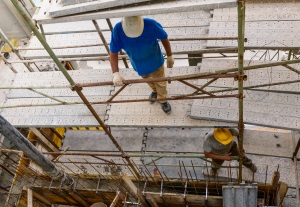Ricostruire. L'Aquila, Pianura padana, Centro Italia: quali politiche e quante risorse per il dopo terremoto? (aggiornamento 2018)

Il 24 agosto 2016, alle 3.36, un terremoto di magnitudo Richter ML 6.0 ha colpito il Centro Italia distruggendo Accumoli, Amatrice, Arquata e Pescara del Tronto. Alle 4.33 una nuova scossa, stavolta di magnitudo 5.4, ha devastato Norcia. Da quel momento Umbria, Marche e Abruzzo non hanno mai smesso di tremare: la rete sismica nazionale dell'INGV in due anni ha registrato, nell'area dell'epicentro, più di 92 mila scosse.
Il bilancio della sequenza sismica è stato pesantissimo in termini di vite umane perdute, di economia sconvolta, di patrimonio culturale devastato. I danni materiali, stimati dalla Protezione civile in 23 miliardi e 530 milioni di euro, sono andati ad aggiungersi a quelli, già ingenti, degli ultimi due gravi sismi che hanno colpito l'Italia nel 2009, all'Aquila, e nel 2012, nella pianura padana.
Questo dossier analizza le risorse finanziarie stanziate per far fronte ai tre terremoti - ammontano a 40,58 miliardi tra 2009 e 2047, di cui 1,8 miliardi appostati nell'ultimo anno - e ricostruisce, per l'ultimo sisma, un quadro normativo sempre più complesso e di difficile interpretazione e attuazione. Anche la risposta all'emergenza abitativa della popolazione - dalle CASE alle casette, passando per MAPRE e container - comincia a essere sotto esame.
In Appendice, gli ultimi dati INGV sulla situazione sismica del paese.
Rebuilding. L'Aquila, Po Valley, Central Italy earthquakes: which politics and how many resources for the aftermath?
On August 24, 2016, at 3:36 AM, an earthquake measuring 6.0 on the Richter magnitude scale rocked central Italy, destroying the towns of Accumoli, Amatrice, Arquata del Tronto and Pescara del Tronto. At 4:33 an another tremor, of magnitude 5.4 this time, brought destruction to Norcia. Since that moment, central Italy has never stopped shaking: over 92,000 tremors have been recorded by INGV, the National Institute og Geophysics and Vulcanology.
The aftermath of this seismic sequence was terrible, in terms of death toll, disrupted economy, devastated cultural heritage. The Civil Defence estimated that material damage totalled about 23,530,000 Euros, which adds on to the significant damage caused by the previous two earthquakes, which struck L'Aquila in 2009 and the Po Valley in 2012.
This study analyses the financial resources fielded to face the aftermath of the three disasters - the government has granted 40,5 billion so far, 1,8 of which in the past year alone - and zeroes in, for the last quake, on the regulatory response: several decree-laws, the later amendments which followed and 96 orders by the Special Commissioner and the Civil Defence authorities, built a complex normative framework whose interpretation and implementation are increasingly difficult.The response to the housing emergency and the provision of housing facilities after the earthquakes of Central Italy and Abruzzo are under examination as well.
The Annex includes the latest data from INGV on the seismic situation of the country.






 Focus
Focus
